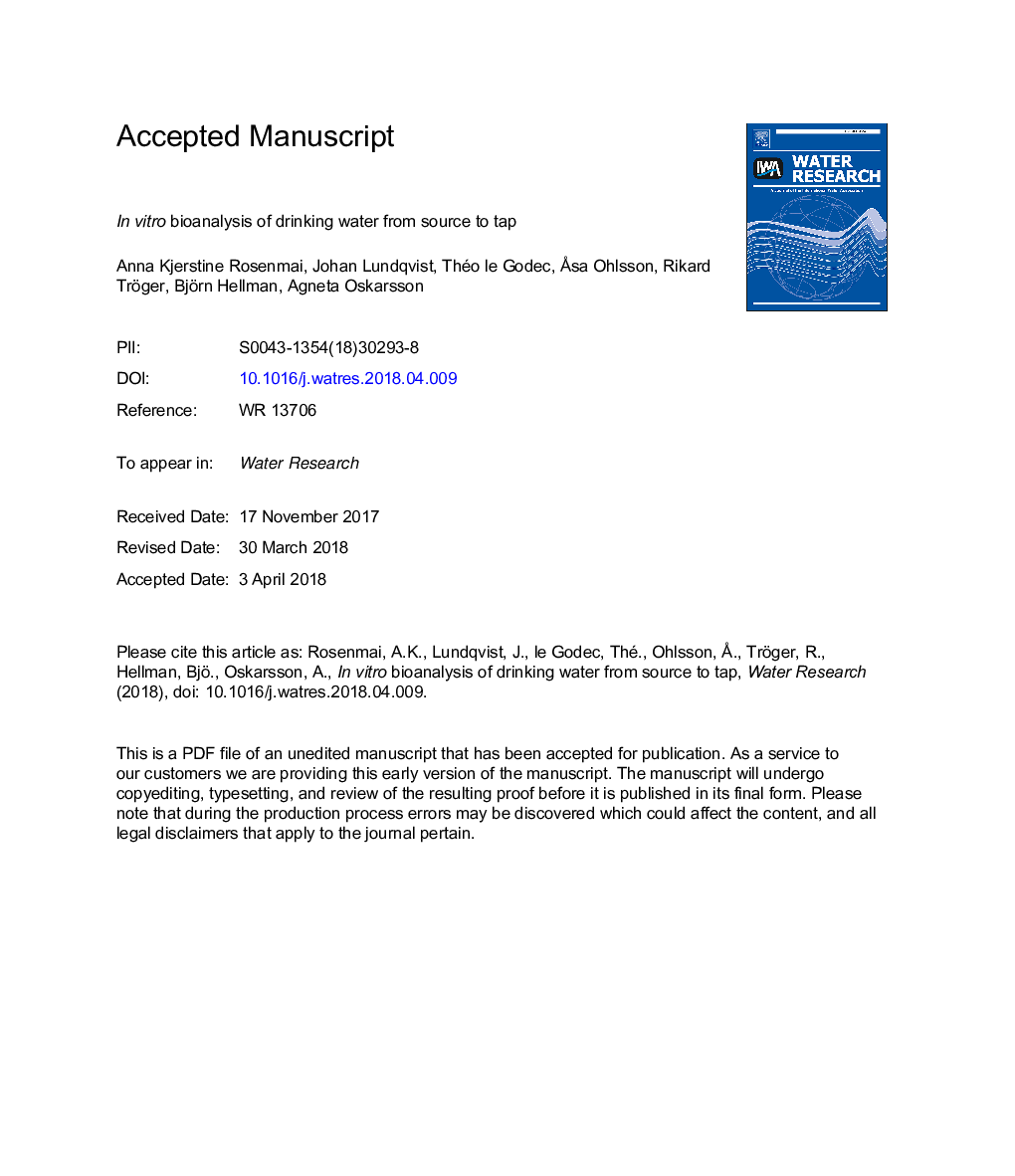| کد مقاله | کد نشریه | سال انتشار | مقاله انگلیسی | نسخه تمام متن |
|---|---|---|---|---|
| 8873953 | 1623029 | 2018 | 60 صفحه PDF | دانلود رایگان |
عنوان انگلیسی مقاله ISI
In vitro bioanalysis of drinking water from source to tap
دانلود مقاله + سفارش ترجمه
دانلود مقاله ISI انگلیسی
رایگان برای ایرانیان
کلمات کلیدی
موضوعات مرتبط
مهندسی و علوم پایه
علوم زمین و سیارات
فرآیندهای سطح زمین
پیش نمایش صفحه اول مقاله

چکیده انگلیسی
The presence of chemical pollutants in sources of drinking water is a key environmental problem threatening public health. Efficient removal of pollutants in drinking water treatment plants (DWTPs) is needed as well as methods for assessment of the total impact of all present chemicals on water quality. In the present study we have analyzed the bioactivity of water samples from source to tap, including effects of various water treatments in a DWTP, using a battery of cell-based bioassays, covering health-relevant endpoints. Reporter gene assays were used to analyze receptor activity of the aryl hydrocarbon receptor (AhR), estrogen receptor (ER), androgen receptor (AR), peroxisome proliferator-activated receptor alpha (PPARα) and induction of oxidative stress by the nuclear factor erythroid 2-related factor 2 (Nrf2). DNA damage was determined by Comet assay. Grab water samples were concentrated by HLB or ENV solid phase extraction and the water samples assayed at a relative enrichment factor of 50. The enrichment procedure did not induce any bioactivity. No bioactivity was detected in Milli-Q water or drinking water control samples. Induction of AhR, ER and Nrf2 activities was revealed in source to tap water samples. No cytotoxicity, PPARα or AR antagonist activity, or DNA damage were observed in any of the water samples. A low AR agonist activity was detected in a few samples of surface water, but not in the samples from the DWTP. The treatment steps at the DWTP, coagulation, granulated activated carbon filtration, UV disinfection and NH2Cl dosing had little or no effect on the AhR, Nrf2 and ER bioactivity. However, nanofiltration and passage through the distribution network drastically decreased AhR activity, while the effect on Nrf2 activity was more modest and no apparent effect was observed on ER activity. The present results suggest that bioassays are useful tools for evaluation of the efficiency of different treatment steps in DWTPs in reducing toxic activities. Bioassays of AhR and Nrf2 are useful for screening of effects of a broad range of chemicals in drinking water and ER activity can be monitored with a high sensitivity.
ناشر
Database: Elsevier - ScienceDirect (ساینس دایرکت)
Journal: Water Research - Volume 139, 1 August 2018, Pages 272-280
Journal: Water Research - Volume 139, 1 August 2018, Pages 272-280
نویسندگان
Anna Kjerstine Rosenmai, Johan Lundqvist, Théo le Godec, Ã
sa Ohlsson, Rikard Tröger, Björn Hellman, Agneta Oskarsson,